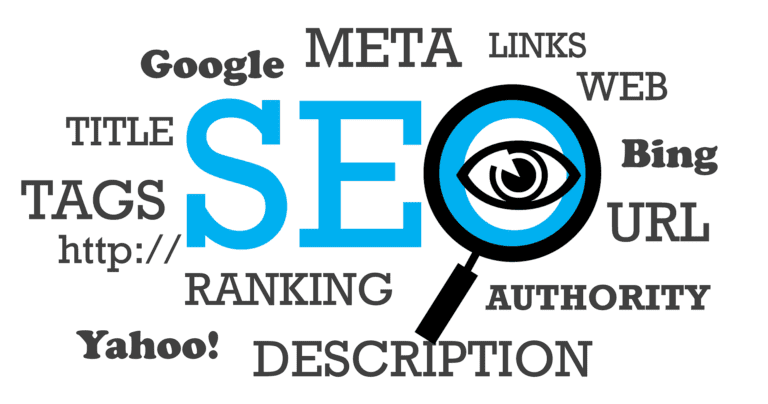 What is Search Engine Optimization (SEO) and Why Should I Care?
What is Search Engine Optimization (SEO) and Why Should I Care?
I saw that! Terms and phrases that were not part of our vocabulary growing up get that reaction. Now, we need to know exactly what this phrase means before we can make serious money. I am assuming you want to make a serious extra retirement income with this gig.
First, let me welcome you to the wild world of (SEO), where the art of crafting compelling content meets the science of ranking higher on search engine results pages. For us bloggers, SEO is the most powerful “tool” in our arsenal. It makes all the difference in the digital universe when it comes to gaining visibility, attracting a loyal audience, and ultimately achieving success in the digital landscape. To be fair, when we say “tool“, most people think of something physical that we can put in our hands, like a hammer! A hammer will fix just about anything that a screwdriver and pliers can’t. SEO is not that! SEO is not even “physical”. So is it an application (App for short)? Nope, not that either. SEO is the way that we fine tune the “keywords” that we type into the search bar on our favorite browser. Wait, What?! I know, I threw you a curve. As a car enthusiast, I know that you know about fine-tuning! So keep following along:
FINE TUNING KEYWORDS -THE WORDS WE USE WHEN WE SEARCH FOR SOMETHING = SEO
Now you have a working definition. Fine tuning the words that we use in the search bar to get a more accurate answer for our question. For example, you type “Setting Points” into your browser, and Yahoo! you have found my website near the top of the search list. How did I accomplish this in just weeks? I talk about setting points in the future to eliminate the retirement crisis through affiliate marketing. When you “fine tune” your search, like “setting points on a 1950 Corvette” my retirement income site will not appear.
As a blogger, you want your content to be discovered by those searching for precisely what you have to offer. SEO ensures that your well-crafted words (Setting Points on a 1950 Corvette) and valuable insights are not lost in the sea of information (Setting Points). Your blog will stand out like a Daytona 500 Trophy to lead your target audience to your virtual doorstep. By optimizing your content for search engines like Google, Bing, and Yahoo, you enhance your chances of ranking higher, driving organic traffic, and fostering meaningful connections with your readers. Which means more money! I like that idea.
In this guide, we drill into the depths of this until we get to the core aspects of SEO. We will explore practical steps to help you unlock the potential of your content. Whether you’re a seasoned blogger seeking to enhance your online presence or a novice looking to embark on your blogging journey, understanding SEO is vital in building a successful blog that resonates with your audience. So, let’s dive in and discover the power of SEO.
Step 1: The very first thing that we need to do is do some research. What service do you offer? Search for that! Me, I am doing my best to eliminate the retirement savings’ crisis at every turn. How? By teaching everyone about affiliate marketing and how to make extra retirement income. 
Within Wealthy Affiliate, where I hone my skills with some of the best bloggers in the world, we have access to a research tool called Jaaxy. Jaaxy is a powerful keyword research tool, that I use to identify relevant keywords related to my “thoughts on eliminating the retirement savings’ crisis“. This tool ($49/month value) is free for members. It provides me with keyword suggestions and the top one was “Extra Retirement Income”. I believe that I told you about the story of how I came upon “Setting Points.”
Jaaxy provides valuable data such as keyword competition, search volume, and potential traffic, helping you find high-traffic, low-competition keywords that can give you an edge in ranking. You want to fine tune your specifics.
I always give the example of the person who wants to blog about dogs. Too broad. 1.15M people a month search for dogs and over 15,000 websites.
Narrow it to a breed? No, still too broad. I have an Italian Greyhound; 10,516 people searching for an Iggy and over 1200 websites about my pup every month. Bet you didn’t know the breed was that popular!
But search for Best Food for an Italian Greyhound and Bing! Only eleven websites talk about what an Italian Greyhound eats. You now work to nail the top spot for Iggy’s food, and you can eventually move into everything else Iggy. As the authority holding down the top spot for food, your visitors will notice that you also have bowls & water dishes, training snacks, and everything else an Iggy eats. As your authority increases, your revenue will do the same. Money Follows the Masters. You become the Iggy Food Master and the money will follow.
Step 2: Keyword Analysis with Google Keyword Planner
 Jaaxy gave me the list of optimized keywords, now let’s cross-reference them with the Google Keyword Planner. The Google Keyword Planner provides additional insights into search volume, competition, and trend data, allowing you to validate and refine your keyword choices.
Jaaxy gave me the list of optimized keywords, now let’s cross-reference them with the Google Keyword Planner. The Google Keyword Planner provides additional insights into search volume, competition, and trend data, allowing you to validate and refine your keyword choices.
Google Keyword Planner is a free tool provided by Google within its Google Ads platform. While it is primarily designed for advertisers to find keywords for their ad campaigns, it is also a valuable resource for content creators and SEO professionals to conduct keyword research. Here’s a detailed explanation of how to effectively use Google Keyword Planner:
Accessing Google Keyword Planner
To use Google Keyword Planner, you need to have a Google Ads account. If you don’t have one, you can create a Google Ads account for free. Once you have an account, log in to Google Ads and navigate to the “Tools & Settings” menu. Under the “Planning” section, click on “Keyword Planner.”
Keyword Research
In the Google Keyword Planner, you have two options for finding keywords:
- “Discover new keywords”: This option allows you to enter relevant terms related to your niche, such as “extra retirement income” or “setting points,” and the tool will generate a list of keyword ideas based on those terms.
- “Get search volume and forecasts”: This option enables you to enter a specific keyword to get data on its search volume, competition, and other relevant metrics.
Analyzing Keyword Metrics
After entering your target keywords, Google Keyword Planner will provide a list of related keywords along with essential metrics like average monthly searches, competition level, and the suggested bid for advertising. Pay attention to the following metrics:
- Average Monthly Searches: This shows how many times the keyword is searched on average each month. Look for keywords with higher search volume to target more significant traffic potential.
- Competition: Indicates how competitive the keyword is in Google Ads. High competition may indicate that ranking organically for this keyword will be challenging.
- Suggested Bid: This is the average bid amount advertisers pay for clicks on this keyword in Google Ads. Higher suggested bids often mean more valuable keywords.
Refining Keyword Selection
Select keywords that are relevant to your content and have a reasonable search volume. Consider long-tail keywords (phrases with three or more words) that are more specific and less competitive. Long-tail keywords can help you attract a targeted audience.
Common Mistakes to Avoid
Focusing Solely on High-Volume Keywords: High-volume keywords are very competitive, making it extremely challenging for your content to rank. Balance high-volume keywords with lower-competition alternatives.
Ignoring Long-Tail Keywords: Long-tail keywords may have lower search volume individually, but collectively, they can bring in substantial traffic. Remember the example of “Best Food for an Italian Greyhound”. Start at the top dog of a smaller list and you will get traffic which will inherently move you and your content up the rankings board for broader categories.
Targeting Irrelevant Keywords: Ensure your selected keywords align with your content’s purpose and the interests of your target audience. When you put keywords into your content that has nothing to do with your topic, just for ranking, your site will end up being unlisted.
By effectively using Google Keyword Planner and understanding its metrics, you can discover valuable keywords to optimize your content, improve SEO, and attract relevant traffic to your blog or website. As a novice, remember to experiment, analyze, and fine-tune your keyword strategy regularly to achieve the best results. Now that we know what SEO is and how to use it, the rest is straight forward.
Step 3: On-Page Optimization with Target Keywords
With your finalized target keywords, optimize your website’s meta tags, title tags, meta descriptions, and header tags (H1, H2, H3). Incorporate your keywords naturally and strategically into the content of your web pages.
Step 4: Content Creation and Optimization
Create valuable and relevant content around your target keywords to address your audience’s needs and interests.
Use the selected keywords in headings, subheadings, and throughout the content while maintaining a natural flow.
Step 5: Link Building with Target Keywords
Develop a link-building strategy that revolves around your target keywords.
Reach out to relevant websites and influencers, emphasizing the use of your keywords in anchor text for backlinks.
Step 6: Website Performance Optimization
Optimize your website’s performance for speed and mobile-friendliness, ensuring a smooth user experience.
A fast-loading and mobile-friendly website is favored by search engines and positively impacts SEO rankings.
Step 7: Social Media and Content Promotion
Share your optimized content on social media platforms to increase visibility and engagement.
Leverage your target keywords in social media posts and descriptions to enhance search ability.
Monitor and Analyze with Jaaxy and Google Analytics
Regularly monitor your keyword rankings and organic search traffic using Jaaxy and Google Analytics.
Analyze the data to identify trends, keyword performance, and areas for improvement in your SEO strategy.
By using Jaaxy and the Google Keyword Planner in your SEO efforts, you gain access to valuable keyword insights, competition data, and trends, allowing you to make well-informed decisions in targeting the right keywords for your content. These tools work in tandem to help you achieve better visibility and higher rankings in search engine results, maximizing your chances of success with your keywords.
Now that you know Search Engine Optimization is Fine tuning Keywords for the search bar, take advantage of this opportunity to join Wealthy Affiliate without a credit card.











